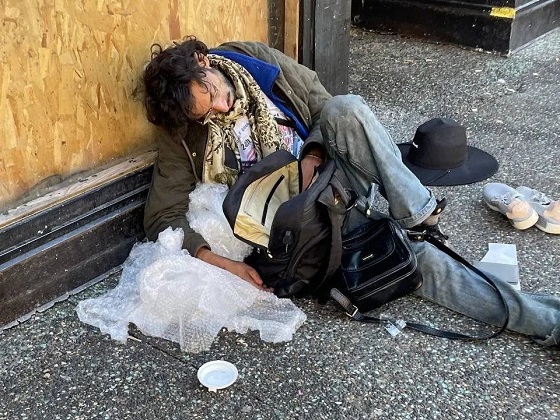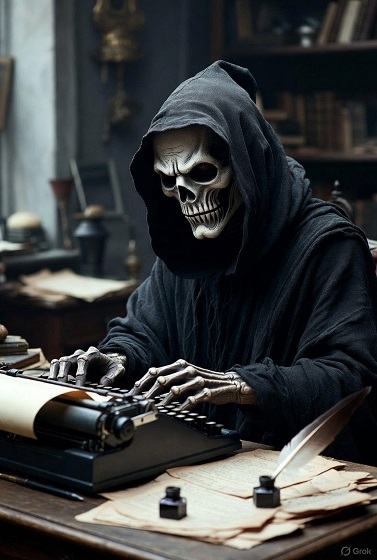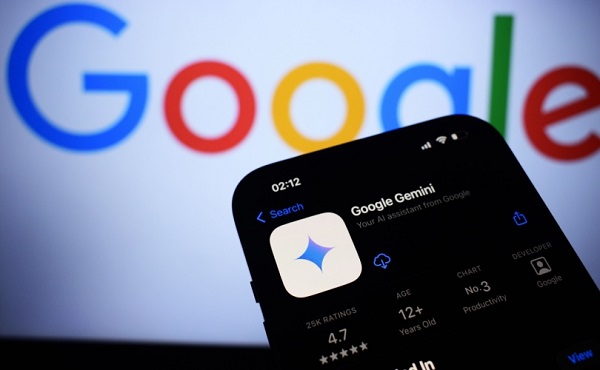Opinion
Could we defer this October 16, 2017 municipal election until 2019?

What if we had an election and nobody showed up? With voter turn out deceasing, that may happen yet.
We will be having an election on October 16, 2017 and it does appear that it is quite plausible, all the incumbents may run again. There are no indications of any incumbents deciding not to run. Since incumbents have a great advantage, media coverage, name recognition, events, etc., it is quite possible that there may not see any differences on October 17, 2017.
There are a few new comers throwing their hats in the ring, but they are not offering much different, than what we have now. So why vote for a shadow when we can vote the real thing?
In 2010 incumbent Mayor Morris Flewelling won re-election beating Hilary Penko, a relative unknown newcomer, but only with 8,100 to her 6,219 votes. He still won but Hilary Penko, made it a race.
Will we have any semblance of a race in 2017, or should we defer it to 2019?
Why? There are several reasons. The 2019 games will be over in March, the Provincial election will be over in May, and the Federal election will be over in October.
The games would be the final hurrah for some incumbents. The Provincial election will see a united right wing party, and new candidates, with some being municipal incumbents. The Federal election will see at least 2 new leaders, anticipated retirement amongst Federal incumbents, and again a few candidates being municipal incumbents.
So it is possible that after many years the Mayor takes the next step and becomes the MP for Red Deer/Mountview, and a couple of councillors become MLAs, and another one or two just retire after the games. Then we should have our election, which we would have had if they not changed municipal terms to 4 years from 3 in 2013.
The Mayor vacates her seat to be an MP, thus creating a By-election. The result of the By-election a councillor becomes the Mayor forciing another By-election for a council seat. A School board trustee wins a seat on council forcing another by-election for a school board trustee.
So to avoid all these hypothetical by-elections let us hold our municipal elections after the other 2019 events. We could demand a commitment that they not vacate their seats for these reasons.
Another reason to hold off the election is our population. Red Deer did their annual census in 2016 and found that the city shrank in population by 975 residents. They decided not to have a census in 2017 because they needed growth to validate the expenditure, which was highly unlikely. They also deferred any annexation due to lack of growth. Currently there is speculation that the population is still in decline, and we will not know until the census in 2018.
If we had 2017 numbers that showed continued decline the incumbents would have to defend their past decisions that may have contributed to our decline and would have to offer plans to turn it around. Now they can use the Federal Census showing growth over a 5 year span.
If the choice is just between incumbents and their shadows, and no real discussion, debate or distinct proposals on important issues, then defer the election to 2019.
Maybe by then we would see real growth, and not be recognized for our high crime rate, poor air quality, and our discriminatory practices against residents living north of the river.
The Mayor faced a “challenger” in 2010, will there be any real challengers for any incumbent in 2017? I hope so or deferral would be my choice.
Time will only tell, it is still early.
Food
Canada Still Serves Up Food Dyes The FDA Has Banned

From the Frontier Centre for Public Policy
By Lee Harding
Canada is falling behind on food safety by continuing to allow seven synthetic food dyes that the United States and several other jurisdictions are banning due to clear health risks.
The United States is banning nine synthetic food dyes linked to health risks, but Canada is keeping them on store shelves. That’s a mistake.
On April 22, 2025, the U.S. Department of Health and Human Services and the Food and Drug Administration (FDA) announced they would ban nine petroleum-based dyes, artificial colourings that give candies, soft drinks and snack foods their bright colours, from U.S. foods before 2028.
The agencies’ directors said the additives presented health risks and offered no nutritional value. In August, the FDA targeted Orange B and Citrus Red No. 2 for even quicker removal.
The good news for Canada is that Orange B was banned here long ago, in 1980, while Citrus Red No. 2 is barely used at all. It is allowed at two parts per million in orange skins. Also, Canada reduced the maximum permitted level for other synthetic dyes following a review in 2016.
The bad news for Canadians is that regulators will keep allowing seven dyes that the U.S. plans to ban, with one possible exception. Health Canada will review Erythrosine (called Red 3 in the U.S.) next year. The FDA banned the substance from cosmetics and drugs applied to the skin in 1990 but waited decades to do the same for food.
All nine dyes targeted by the FDA have shown evidence of tumours in animal studies, often at doses achievable through diet. Over 20 years of meta-analyses also show each dye increases the risk of attention deficit hyperactivity disorder in eight to 10 per cent of children, with a greater risk in mixtures.
At least seven dyes demonstrate broad-spectrum toxicity, especially affecting the liver and kidneys. Several have been found to show estrogenic endocrine effects, triggering female hormones and causing unwanted risks for both males and females. Six dyes have clinical proof of causing DNA damage, while five show microbiome disruption in the gut. One to two per cent of the population is allergic to them, some severely so.
The dyes also carry a risk of dose dependency, or addiction, especially when multiple dyes are combined, a common occurrence in processed foods.
U.S. research suggests the average child consumes 20 to 50 milligrams of synthetic dyes per day, translating to 7.3 to 18.25 kilograms (16.1 to 40.2 pounds) per year. It might be less for Canadian kids now, but eating even a “mere” 20 pounds of synthetic dyes per year doesn’t sound healthy.
It’s debatable how to properly regulate these dyes. Regulators don’t dispute that scientists have found tumours and other problems in rats given large amounts of the dyes. What’s less clear are the implications for humans with typical diets. With so much evidence piling up, some countries have already taken decisive action.
Allura Red (Red 40), slated for removal in the U.S., was previously banned in Denmark, Belgium, France, Switzerland, Sweden and Norway. However, these countries were forced to accept the dye in 2009 when the European Union harmonized its regulations across member countries.
Nevertheless, the E.U. has done what Canada has not and banned Citrus Red No. 2 and Fast Green FCF (Green 3), as have the U.K. and Australia. Unlike Canada, these countries have also restricted the use of Erythrosine (Red 3). And whereas product labels in the E.U. warn that the dyes risk triggering hyperactivity in children, Canadians receive no such warning.
Canadian regulators could defend the status quo, but there’s a strong case for emulating the E.U. in its labelling and bans. Health Canada should expand its review to include the dyes banned by the E.U. and those the U.S. is targeting. Alignment with peers would be good for health and trade, ensuring Canadian manufacturers don’t face export barriers or costly reformulations when selling abroad.
It’s true that natural alternatives present challenges. Dr. Sylvain Charlebois, a food policy expert and professor at Dalhousie University, wrote that while natural alternatives, such as curcumin, carotenes, paprika extract, anthocyanins and beet juice, can replace synthetic dyes, “they come with trade-offs: less vibrancy, greater sensitivity to heat and light, and higher costs.”
Regardless, that option may soon look better. The FDA is fast-tracking a review of calcium phosphate, galdieria blue extract, gardenia blue, butterfly pea flower extract and other natural alternatives to synthetic food dyes. Canada should consider doing the same, not only for safety reasons but to add value to its agri-food sector.
Ultimately, we don’t need colour additives in our food at all. They’re an unnecessary cosmetic that disguises what food really is.
Yes, it’s more fun to have a coloured candy or cupcake than not.What’s less fun is cancer, cognitive disorders, leaky gut and hormonal disruptions. Canada must choose.
Lee Harding is a research fellow for the Frontier Centre for Public Policy.
Addictions
Manitoba Is Doubling Down On A Failed Drug Policy

From the Frontier Centre for Public Policy
Manitoba is choosing to expand the same drug policy model that other provinces are abandoning, policies that normalize addiction while sidelining treatment, recovery, and public safety.
The New Democrat premier of British Columbia, David Eby, stood before reporters last spring and called his government’s decision to permit public drug use in certain spaces a failure.
The policy was part of the broader “harm reduction” strategy meant to address overdose deaths. Instead, it had stirred public anger, increased street disorder and had helped neither users nor the communities that host them. “We do not accept street disorder that makes communities feel unsafe,” Eby said. The province scrapped the plan.
In Alberta, the Conservative government began shutting down safer-supply prescribing due to concerns about drug diversion and misuse. The belief that more opioids can resolve the opioid crisis is losing credibility.
Ontario Progressive Conservatives are moving away from harm reduction by shutting down supervised consumption sites near schools and limiting safer-supply prescribing. Federal funding for programs is decreasing, and the province is shifting its focus to treatment models, even though not all sites are yet closed.
Yet amid these non-partisan reversals, Manitoba’s government has announced its intention to open a supervised drug-use site in Winnipeg. Premier Wab Kinew said, “We have too many Manitobans dying from overdose.” True. But it does not follow that repeating failed approaches will yield different results.
Reversing these failed policies is not a rejection of compassion. It is a recognition that good intentions do not produce good outcomes. Vancouver and Toronto have hosted supervised drug-use sites for years. The death toll keeps rising. Drug deaths in British Columbia topped 2,500 in 2023, even with the most expansive harm reduction infrastructure in the country. A peer-reviewed study published this year found that hospitalizations from opioid poisoning rose after B.C.’s safer-supply policy was implemented. Emergency department visits increased by more than three cases per 100,000 population, with no corresponding drop in fatal overdoses.
And the problem persists day to day. Paramedics in B.C. responded to nearly 4,000 overdose calls in July 2024 alone. The monthly call volume has exceeded 3,000 almost every month this year. These are signs of crisis management without a path to recovery.
There are consequences beyond public health. These policies change the character of neighbourhoods. Businesses suffer. Residents feel unsafe. And most tragically, the person using drugs is offered little more than a cot, a nurse and a quiet signal to continue. Real help, like treatment, housing and purpose, remains out of reach.
Somewhere along the way, bureaucracies stopped asking what recovery looks like. They have settled for managing human decline. They call it compassion. But it is really surrender, wrapped in medical language.
Harm reduction had its time. It made sense when it first emerged, during the AIDS crisis, when dirty needles spread HIV. Back then, the goal was to stop a deadly virus. Today, that purpose has been lost.
When policy drifts into ideology, reality becomes an afterthought. Underneath today’s approach is the belief that drug use is inevitable, that people cannot change, that liberty means letting others fade away quietly. These ideas do not reflect science. They do not reflect hope. They reflect despair. They reflect a politics that prioritizes the appearance of compassion over effectiveness.
What Manitoba needs is treatment access that meets the scale of the problem. That means detox beds, recovery homes and long-term care focused on restoring lives. These may not generate the desired headlines, but they work. They are demanding. They are slow. And they offer respect to the person behind the addiction.
There are no shortcuts. No policy will undo decades of pain overnight. But a policy that keeps people stuck using is not mercy. It is maintenance with no way out.
A government that believes in its people should not copy failure.
Marco Navarro-Genie is vice-president of research at the Frontier Centre for Public Policy and co-author, with Barry Cooper, of Canada’s COVID: The Story of a Pandemic Moral Panic (2023).
-

 Opinion1 day ago
Opinion1 day agoLandmark 2025 Study Says Near-Death Experiences Can’t Be Explained Away
-

 Focal Points1 day ago
Focal Points1 day agoSTUDY: TikTok, Instagram, and YouTube Shorts Induce Measurable “Brain Rot”
-

 Alberta1 day ago
Alberta1 day agoRed Deer’s Jason Stephan calls for citizen-led referendum on late-term abortion ban in Alberta
-

 Business1 day ago
Business1 day agoBlacked-Out Democracy: The Stellantis Deal Ottawa Won’t Show Its Own MPs
-

 Health1 day ago
Health1 day agoTens of thousands are dying on waiting lists following decades of media reluctance to debate healthcare
-

 Agriculture15 hours ago
Agriculture15 hours agoHealth Canada pauses plan to sell unlabeled cloned meat
-

 Artificial Intelligence8 hours ago
Artificial Intelligence8 hours agoGoogle denies scanning users’ email and attachments with its AI software
-

 Indigenous1 day ago
Indigenous1 day agoIndigenous activist wins landmark court ruling for financial transparency



